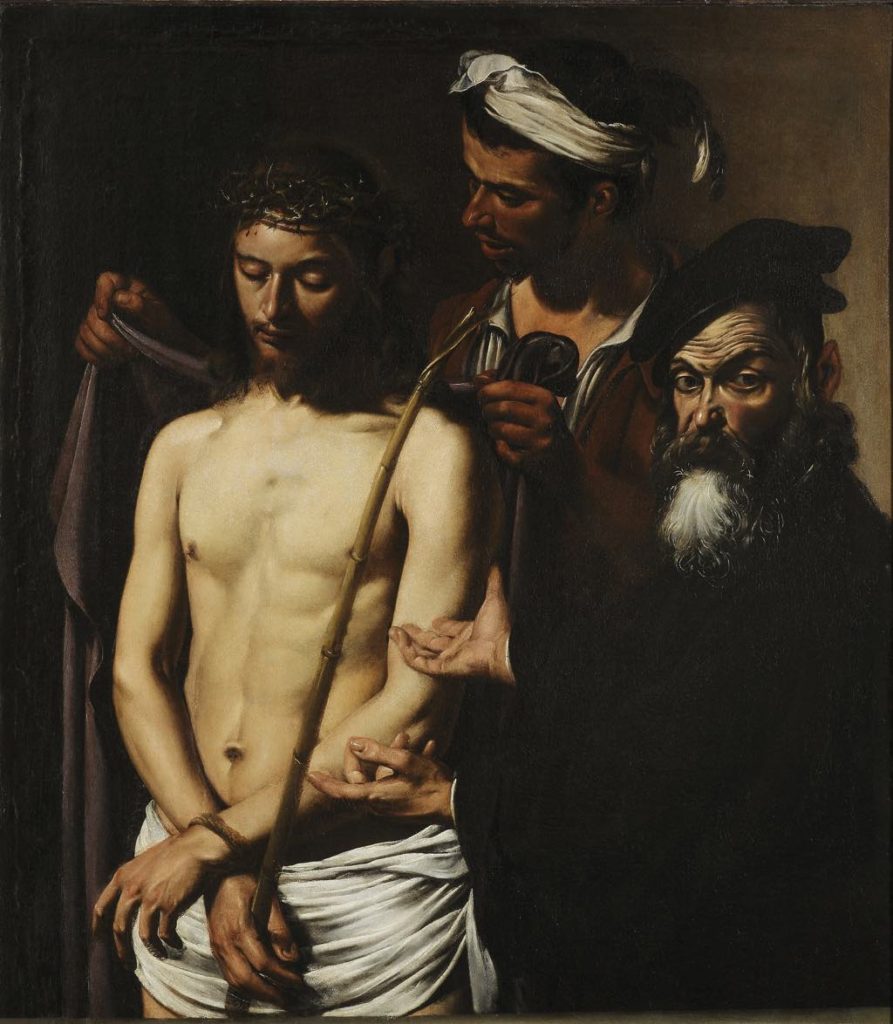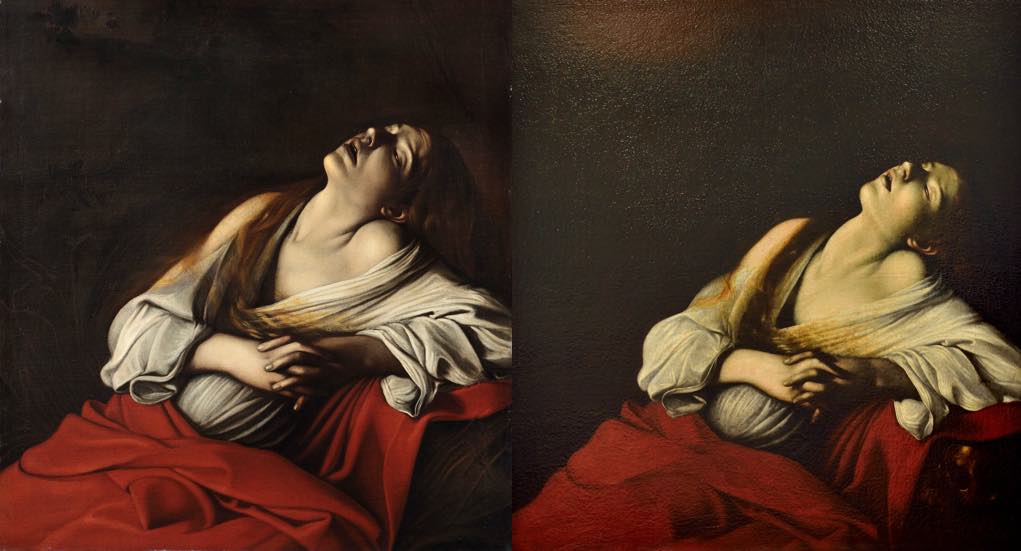
Rome has been pillaged, stripped of many of its precious paintings by Caravaggio! Whodunit? The Musée Jacquemart-André in Paris, to the great joy of Parisians and visitors to the city, who for a time can have the thrill of seeing no fewer than 10 paintings (caveat: a couple of them have disputed attributions) by the turbulent Michelangelo Merisi da Caravaggio (1571-1610) in the show “Caravaggio: The Roman Period.”
Often this type of exhibition features only a few works by the artist who gets star billing, with the rest of the show filled in with the work of contemporaries and followers. While we do have some of the latter here, they help to round out the story told by the Caravaggio masterpieces and justify the subtitle of the show: “Friends and Enemies.”
Unlike his predecessors and contemporaries, Caravaggio worked quickly, straight from life, and opted for reality over fantasy, even in religious subjects (which caused some of his commissions for churches to be rejected).
In the very first room, we get one of Caravaggio’s great works: “Judith Beheading Holofernes” (c. 1660; pictured above), full of the drama and realism he never stinted on. The long blade Judith wields is halfway through its work of severing the drunken Syrian general’s head from his body. His mouth and eyes are wide open in shock as blood pours from his neck. Judith draws her head back slightly and wrinkles her brow in disgust but carries on with the job of slaughtering the enemy of the Jewish people. Meanwhile, her aged maidservant, every deep crease in her face carefully picked out, looks on with bloodthirsty glee.
As in this work, the great Caravaggio paintings get in close to their subjects, leaving out extraneous details and using light and darkness to focus in on the most dramatic moments of a scene. Contrast Caravaggio’s “Judith Beheading Holofernes” with the same subject treated by Caravaggio’s contemporary Orazio Gentileschi (1563–1639) in “Judith and Her Maidservant with the Head of Holofernes” (c. 1621), also on show in the exhibition: the static scene shows the aftermath of the act as Judith and her servant cradle the general’s head in their laps and look anxiously around them.

Another telling comparison in the show places Caravaggio’s “John the Baptist” (1602) next to Bartolomeo Manfredi’s “John the Baptist” (1613-15). Both zoom in on the young Baptist holding a sheep, but Caravaggio’s tightly framed painting shows him shockingly naked as he twists around to look at the viewer with a laughing smile while wrapping his arm affectionately around the animal. Manfredi’s Baptist, his private parts modestly covered, sits passively and pensively staring at the sheep he holds. The latter image, obviously influenced by Caravaggio’s painting, may have been more pleasing to Church authorities, but Caravaggio’s dynamic version is so much more full of life and joy that one cannot help but prefer it to Manfredi’s.

Caravaggio’s use of light, dark and color even brings drama to the depiction of an old man lost in contemplation in “Saint Jerome Writing” (c. 1605). A plain background in this masterpiece focuses attention on the red-robed saint, his muscular right arm stretched out across the table while his left hand holds the book he is absorbed in. On the other side of the table, a skull perfectly echoes his bald head.

Just a mention for the beautifully tender Christ figure in “Ecce Homo” (1605), which contrasts dramatically with the almost grotesque face of Pontius Pilate (perhaps the artist’s self-portrait) on the right.

In the last room, visitors get to compare for themselves two versions of one of Caravaggio’s last paintings, “Mary Magdalen in Ecstasy” (1606?). The supposed original, found in a private collection in Europe in 2014 and previously exhibited only once (in Japan), hangs alongside the “Klain Madeleine.” Whether they are by his hand or not, they certainly feature all the qualities of a Caravaggio painting, with a strong diagonal composition, dramatic lighting, realism and emotional power.

Among works by the brawling Caravaggio’s enemies in the exhibition, the most dramatic is “Sacred Love Versus Profane Love” (1602–03), by Giovanni Baglione, who unsuccessfully sued Caravaggio for libel. It gives the devil Caravaggio’s features and depicts profane love as a boy, an allusion to Caravaggio’s supposed homosexuality, while the angel represents sacred love.
Whether they were his friends or enemies, this rare exhibition amply demonstrates that most of Caravaggio’s followers and rivals just didn’t measure up to the master’s originality, brilliance and power. Don’t miss this chance to see so many works by him in one place.
Favorite

She is so technically proficient in the throat cutting department, don’t you think?
I get the feeling the hag next to her has had experience in this line of work.